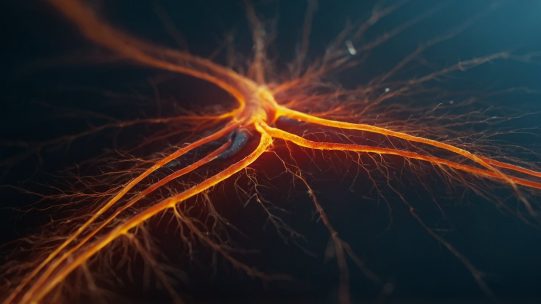Novel Compound Indirectly Targeting Calcium Channels Outperforms Analgesics

One of the 27 million compounds screened in a library of potential new drugs restored four types of chronic pain in animal studies, according to a new study led by the Pain Research Center at New York University School of Dentistry and published in the Proceedings of the National Academy of Sciences (PNAS).
The small molecule, which binds to an internal region of calcium channels and indirectly regulates them, outperformed gabapentin without bothersome side effects, making it a promising candidate for pain treatment.
Calcium channels play a central role in pain signaling through the release of neurotransmitters such as glutamate and GABA. According to Rajesh Khanna, director of the NYU Pain Research Center and professor of molecular pathobiology at the NYU School of Dentistry, “the currency of pain signaling,” Cav2.2 (or N-type) calcium channels are the most important source of calcium for gabapentin (sold under trade names such as neurontin) and pregabalin (Lyrica), and are the target of three other clinically available drugs widely used to treat nerve pain and epilepsy.
Gabapentin binds to the outer Cav2.2 calcium channel and alleviates pain by affecting the channel’s activity. However, as with many analgesics, the use of gabapentin is often associated with side effects.
Developing effective pain management with minimal side effects is critical, but creating new therapies has been challenging,’ said Dr. Lindsey. In our lab, we focus on indirectly targeting proteins involved in pain, rather than directly targeting known pain-relieving targets.”
Dr. Khanna has long been interested in a protein called CRMP2, which is a key regulator of the Cav2.2 calcium channel and binds to the channel from the inside. He and his colleagues previously discovered a CRMP2-derived peptide (a small region composed of amino acids) that can unbind CRMP2 to the calcium channel.
When the peptide, named calcium channel-binding domain 3 (CBD3), was administered to cells, it acted as a decoy, preventing CRMP2 from binding to the inside of the calcium channel. As a result, the amount of calcium entering the calcium channel was reduced and the release of neurotransmitters was suppressed.
Peptides are difficult to synthesize as drugs because they act quickly and are easily broken down in the stomach. Starting with the 15 amino acids that make up the CBD3 peptide, the team focused on two amino acids that studies have shown have a role in inhibiting calcium influx and relieving pain.
At that point,” Canna says, “we realized that these two amino acids could be the building blocks for designing small molecules.
Working with researchers at the University of Pittsburgh, the researchers ran computer simulations and screened a library of 27 million compounds to find small molecules that “matched” the CBD3 amino acids.
The simulations narrowed the library down to 77 compounds, which the researchers then tested experimentally to see if they reduced calcium influx. They narrowed it down to nine compounds and used electrophysiological techniques to measure the reduction in current through calcium channels.
One compound, which the researchers named CBD3063, emerged as the most promising candidate for pain treatment. Biochemical tests showed that CBD3063 inhibits the interaction of the CaV2.2 calcium channel with the CRMP2 protein, reducing calcium influx into the channel and decreasing neurotransmitter release.
“Many scientists have screened the same compound libraries, but they have tried to block the calcium channel from the outside. Our target, CRMP2, has two amino acids on the inside of the cell, and this indirect approach may be the key to success,” says Canna.
Kanna’s lab then tested CBD3063 in a mouse model of injury-related pain. The compound was effective in relieving pain in both male and female mice. In particular, in tests that compared it head-to-head with the drug gabapentin, the amount of CBD3063 needed to relieve pain was much less (1-10 mg) than gabapentin (30 mg).
To determine whether CBD3063 is effective for different types of chronic pain, Canna partnered with researchers from Virginia Commonwealth University, Michigan State University, and Rutgers University. The collaborators conducted a similar study by administering CBD3063 to animal models of chemotherapy-induced neuropathy, inflammatory pain, and trigeminal neuralgia.
However, unlike gabapentin, the use of CBD3063 had no side effects, including sedation, changes in cognitive functions such as memory or learning, or changes in heart rate or respiration.
Future Challenges. Researchers continue to refine the chemical composition of CBD3063, while conducting additional studies to study the compound’s safety and assess whether tolerance develops.
In the long term, they hope to bring CBD3063-derived drugs into clinical trials to provide a new option for safe and effective pain relief. The identification of this first-in-class small molecule is the culmination of more than 15 years of research. As our research journey continues, we are eager to present a superior successor to gabapentin for the effective management of chronic pain,” Kanna said.










Comment